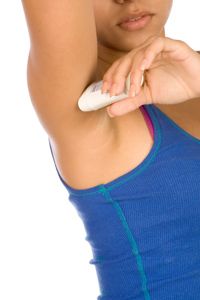Wave your hands in the air like you just don't care. That's the mandate handed down by dozens of musicians, from MC Frontalot to Miley Cyrus. Yep, party the night away with your arms up, armpits fully exposed. A fun time for many can actually be an embarrassing situation for a lot of people plagued with issues of underarm darkening or splotchiness.
The reasons for underarm discoloration vary. Pregnancy, diabetes and even just irritation from shaving can cause skin in the armpits to darken (See What causes underarm darkening?). This problem, called hyperpigmentation, results from excess melanin production in the underarms. As you may have guessed, melanin is the natural substance made by your body that gives color to your skin, your hair and the irises in your eyes. The amount of melanin your body produces dictates your general skin tone, so people with more melanin have darker complexions and vice versa. Also, that amount isn't constant. Hanging out in the sun can stimulate the skin cells that make melanin – melanocytes – and voila, you get a sun tan.
Advertisement
But as we said, melanin production can sometimes get out of control, causing hyperpigmentation in the armpits and leaving people with uneven skin tone. To combat this problem, scientists have formulated different skin lightening agents to be applied as topical creams to the problem areas. These creams are regulated and approved to inhibit melanin production. So underarm whitening creams actually do work and can help with this problem. On the flip side, the active ingredients can cause skin irritation and may even be linked to cancer, so these products are highly regulated. You can buy over-the-counter creams that are less powerful or see a dermatologist to get a prescription one that may act more aggressively.



